Learn how to start a backyard orchard with this beginner’s guide to growing fruit trees at home. From choosing the right varieties for your climate to planting, pruning, and caring for your trees, this guide covers everything you need to get started. Whether you have a large yard or a small homestead, you can enjoy fresh, homegrown fruit year after year with a well-planned orchard.
Have you ever dreamed of plucking fresh, juicy pears from your own backyard? Or maybe you’ve imagined stepping outside to gather ripe peaches for a homemade cobbler. Well, I’m here to tell you that these dreams can become a reality, even if you don’t have acres of land. Starting a backyard orchard is not only possible, but it’s also a rewarding journey that can bring you years of delicious fruits and a deeper connection to nature.
My Backyard Orchard
When I first started my own little orchard, I was amazed at how much joy it brought me. There’s something magical about watching tiny saplings grow into fruit-bearing trees. And let me tell you, nothing beats the taste of a sun-warmed cherry plum picked straight from the branch!
But I know getting started can feel overwhelming. That’s why I’ve put together this beginner’s guide to help you begin your own backyard orchard adventure.
In this post, I’ll walk through everything you need to know to start your very own fruit paradise. From planning and preparing your site to planting, caring for your trees, and finally harvesting your homegrown bounty.
Whether you have a sprawling yard or just a small corner to work with, you’ll learn how to make the most of your space and create an orchard that’s perfect for you. So, grab a cup of tea, and let’s dig into the wonderful world of backyard orchards!
This is a pinnable post. Tap or hover over any image in this post to pin to your Pinterest Boards.
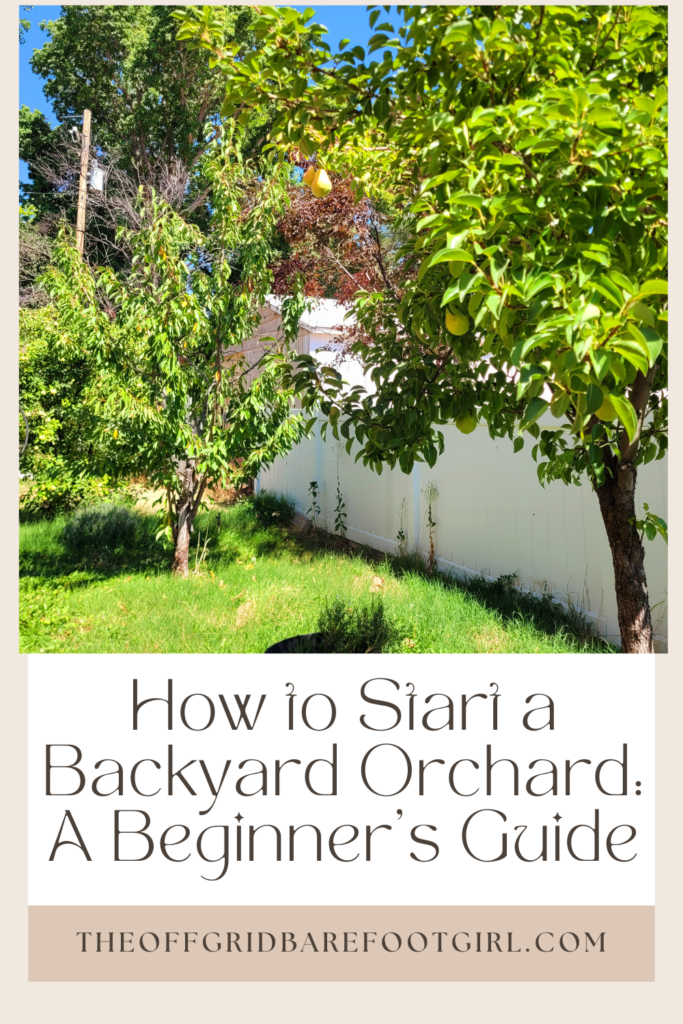
Planning Your Backyard Orchard
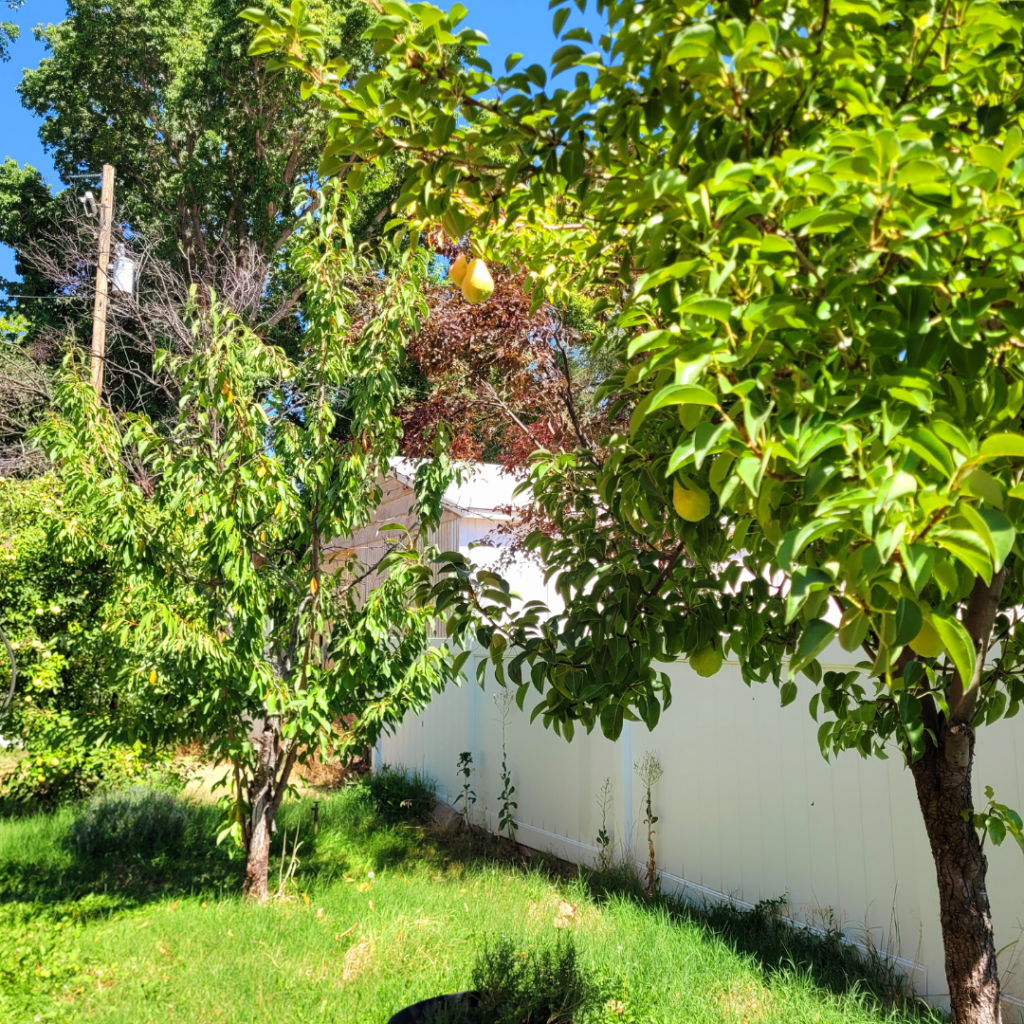
When it comes to starting a backyard orchard, proper planning is the key to success. As someone who’s spent years cultivating my own little slice of paradise, I can’t stress enough how important it is to take the time to plan before you start digging. Let’s discuss the essential aspects of planning your backyard orchard.
Assessing Your Space and Climate
The first step in planning your orchard is to take a good look at your available space and understand your local climate. Walk around your property and observe:
- Sunlight patterns throughout the day.
- Areas with natural wind protection.
- Soil quality and drainage.
- Proximity to water sources.
Your climate zone will significantly influence which fruit trees will thrive. Research your USDA hardiness zone and average rainfall. Keep in mind that microclimates within your yard can create pockets of warmer or cooler areas.
Choosing the Right Fruit Trees
Once you understand your space and climate, it’s time to select your fruit trees. Consider:
- Cold Hardiness: Ensure the trees can withstand your winter temperatures.
- Pollination Requirements: Some trees need a partner to produce fruit.
- Mature Size: Factor in the full-grown size to avoid overcrowding.
- Disease Resistance: Choose varieties that are less prone to common local issues.
Don’t be afraid to mix it up! A diverse orchard with different types of fruit can provide harvests throughout the growing season and reduce the risk of losing everything to a single pest or disease.
I have fruit trees that I can harvest at different times throughout the year. I can pick cherries, berries, and strawberries in the late spring to early summer. Next, I can pick pears and more berries at the end of summer. Finally, I can pick quince, apples, and more berries at the end of fall.
Determining the Optimal Layout
Now comes the fun part – designing your orchard layout. Here are some tips to keep in mind:
- Space trees according to their mature size, not their current size.
- Consider dwarf or semi-dwarf varieties for smaller spaces.
- Plan for easy access for maintenance and harvesting.
- Group trees with similar water and sunlight needs together.
- Incorporate companion plants to attract pollinators and deter pests.
Remember, a well-planned layout can make a big difference in the long-term health and productivity of your orchard. I wrote an in-depth post on companion planting for your backyard orchard!
The Best Companion Plants for Fruit Trees
When I first started my orchard, I made the mistake of planting trees too close together. Trust me, it’s much easier to plan for proper spacing now than to try and relocate a mature tree later! This includes berry and herb bushes too! They get big quickly!
As you plan your backyard orchard, think about how it fits into your overall self-sufficiency goals. An orchard can be a beautiful and productive addition to any homestead, providing fresh fruit for eating, preserving, and even bartering.
Take your time with the planning process. Sketch out your ideas, research local fruit tree varieties, and don’t hesitate to reach out to local gardening groups or extension offices for advice. With careful planning, you’ll be well on your way to creating a thriving backyard orchard that will provide you with delicious, homegrown fruit for years to come.
Preparing the Site
Before we discuss planting those fruit trees, we need to make sure our backyard is ready to nurture them. Preparing the site is a crucial step that can make or break your orchard’s success. Let’s roll up our sleeves and get our hands dirty!
Soil Testing and Improvement
First things first, we need to know what we’re working with. Soil testing is like getting a health check-up for your land. It reveals the pH level, nutrient content, and soil structure. You can get a soil testing kit from your local garden center or send a sample to a cooperative extension office for a more detailed analysis.
Once you have the results, it’s time to make some improvements. Most fruit trees prefer slightly acidic soil with a pH between 6.0 and 6.5.
Soil Fixes for Backyard Orchards!
- If your soil is too acidic, you might need to add some lime.
- Too alkaline? Sulfur can help bring that pH down.
- As for nutrients, compost is your best friend. It’s like a multivitamin for your soil, improving both structure and fertility.
Clearing and Leveling the Area
Now, let’s tackle the landscape. Remove any existing vegetation, rocks, or debris from your chosen orchard site. This step is crucial for giving your trees the best start without competition for nutrients and water.
When it comes to leveling, remember that fruit trees generally prefer well-draining soil. If you’re dealing with a slope, consider creating terraces to prevent erosion and make maintenance easier. Trust me, your future self will thank you when it’s time for pruning and harvesting!
Installing Irrigation Systems
Water is life, especially for young fruit trees. While established trees can be quite drought-tolerant, setting up a good irrigation system from the start will save you a lot of headaches (and potentially, trees) down the line.
Drip irrigation is often the most efficient method for orchards. It delivers water directly to the root zone, reducing water waste and keeping foliage dry, which can help prevent fungal diseases. If you’re feeling adventurous, you might even consider setting up a rainwater harvesting system to complement your irrigation. It’s a great way to be more self-sufficient and environmentally friendly.
When planning your irrigation, think about future growth. Those tiny saplings will become full-grown trees before you know it, so leave enough space between irrigation lines to accommodate their mature size.
Remember, preparing your site thoroughly might seem like a lot of work upfront, but it’s an investment in the future health and productivity of your orchard. Take the time to do it right, and you’ll be rewarded with bountiful harvests for years to come.
As you work on preparing your site, don’t forget to take a moment to appreciate the process. There’s something deeply satisfying about working the land with your own hands, knowing that you’re creating a foundation for a thriving orchard. It’s more than just planting trees; it’s cultivating a legacy that will nourish you and your loved ones for generations. So put on those work boots, grab your tools, and let’s get that orchard site ready for some fruit-filled adventures!
Planting Your Fruit Trees
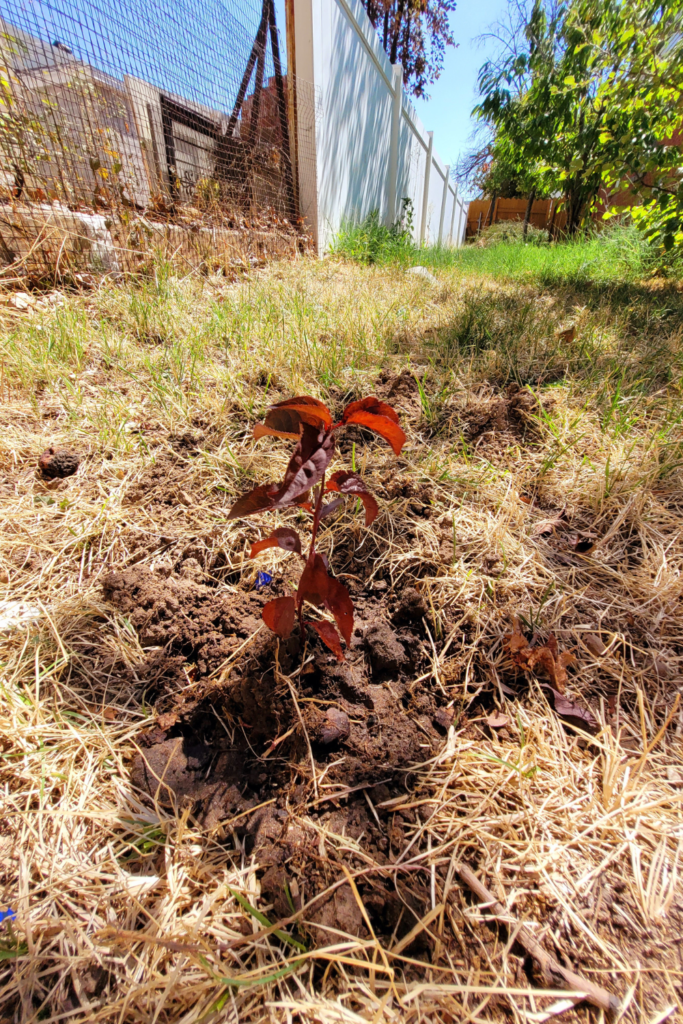
Now that you’ve chosen the perfect spot for your backyard orchard, it’s time to get those fruit trees in the ground. As someone who’s spent countless hours tending to my own little slice of paradise, I can tell you that proper planting is crucial for the long-term success of your trees. Let’s discuss the nitty-gritty of getting your orchard off to a great start.
Selecting Quality Trees
When it comes to fruit trees, quality matters. Look for trees with:
- A strong, straight trunk.
- Evenly spaced branches.
- Healthy, vibrant leaves (if in season).
- No signs of disease or pest damage.
- A well-developed root system.
Don’t be fooled by size alone. A smaller tree with excellent structure often outperforms a larger one in the long run. I’ve found that bare-root trees, while they may look like nothing more than sticks, often establish themselves quickly and vigorously.
Proper Planting Techniques
Planting your fruit trees correctly sets the stage for years of bountiful harvests. Here’s how to do it right:
- Dig a hole twice as wide as the root ball, but only as deep as the roots.
- Create a small mound in the center of the hole to spread the roots over.
- Position the tree so the graft union (the bulge where the rootstock meets the scion) is 2-3 inches above soil level.
- Backfill with native soil, gently tamping down to remove air pockets.
- Water thoroughly to help settle the soil around the roots.
Remember, planting too deep is a common mistake that can lead to poor growth or even tree death. When in doubt, err on the side of planting slightly higher.
Initial Pruning and Training
Don’t be afraid to prune your newly planted trees. It might seem counterintuitive, but proper pruning encourages strong growth and helps shape the tree for future production. Here’s what you need to do:
- Remove any broken or damaged branches.
- Cut back the central leader by about one-third to promote branching.
- Trim side branches to about 6 inches long, making cuts just above an outward-facing bud.
For dwarf and semi-dwarf trees, consider using stakes or tree spreaders to encourage wide branch angles. This will help create a strong structure that can support heavy fruit loads in the future.
As you tend to your young orchard, remember that patience is key. It might take a few years before you see your first fruits, but the wait is well worth it. There’s nothing quite like biting into a sun-warmed cherry plum or crisp pear that you’ve grown yourself!
In my experience, the most rewarding part of starting a backyard orchard isn’t just the harvest – it’s the connection you build with your land and the satisfaction of nurturing something from the ground up. So get your hands dirty, embrace the learning process, and before you know it, you’ll be well on your way to orchard abundance!
Caring for Your Orchard
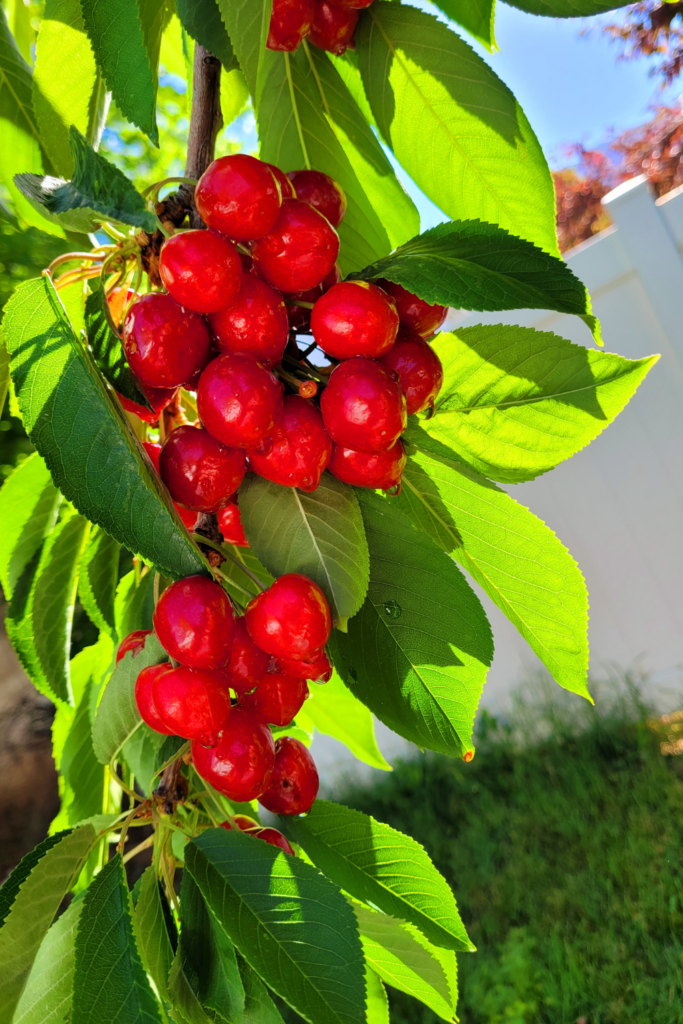
Once you’ve planted your backyard orchard, the real work begins. Caring for your fruit trees is an ongoing process that requires attention and dedication, but the rewards are well worth it. As someone who’s tended to my own little orchard for years, I can tell you that there’s nothing quite like biting into a juicy pear or cherry that you’ve grown yourself. Let’s discuss the essential aspects of orchard care.
Watering and Fertilizing
Proper watering is crucial for the health of your fruit trees. Young trees need more frequent watering than established ones, but all trees benefit from deep, infrequent watering. This encourages roots to grow deeper, making your trees more resilient to drought. A good rule of thumb is to water deeply once a week, providing about an inch of water each time.
Fertilizing is equally important. In spring, before new growth begins, apply a balanced fertilizer around the drip line of your trees. Organic options like compost or well-rotted manure are excellent choices. Remember, over-fertilizing can be just as harmful as under-fertilizing, so always follow the recommended application rates.
Pruning and Training Techniques
Pruning is an art and a science that takes practice to master, but don’t let that intimidate you. The main goals of pruning are to:
- Improve air circulation and sunlight penetration.
- Remove dead, diseased, or crossing branches.
- Shape the tree for easier harvesting and maintenance.
For most fruit trees, winter is the best time to prune when the tree is dormant. However, some trees, like cherry and plum, are best pruned in summer to avoid diseases.
Training young trees is crucial for developing a strong structure. The most common training systems are:
- Central Leader: Ideal for apples and pears.
- Open Center: Great for peaches and plums.
- Modified Central Leader: A compromise between the two.
Whichever system you choose, start training early and be consistent.
Pest and Disease Management
Keeping your orchard healthy involves staying vigilant against pests and diseases. Integrated Pest Management (IPM) is a sustainable approach that combines various control methods:
- Cultural Controls: Proper sanitation, like removing fallen fruit and leaves.
- Mechanical Controls: Using traps or barriers.
- Biological Controls: Encouraging beneficial insects.
- Chemical Controls: As a last resort, using organic or synthetic pesticides.
Some common orchard pests to watch out for include:
Diseases can also be a problem, with common issues including:
Regular inspection of your trees is key to catching problems early. Look for signs of stress, unusual discoloration, or pest activity. If you’re unsure about what you’re seeing, don’t hesitate to consult local gardening resources or extension offices for guidance.
Remember, a healthy orchard starts with healthy soil and proper care. By providing your trees with the right amount of water, nutrients, and maintenance, you’ll be well on your way to harvesting delicious, homegrown fruit. It’s a learning process, and each season brings new challenges and rewards. But trust me, there’s nothing quite like the satisfaction of sharing a pie made from fruit you’ve grown yourself!
Harvesting and Enjoying Your Fruits
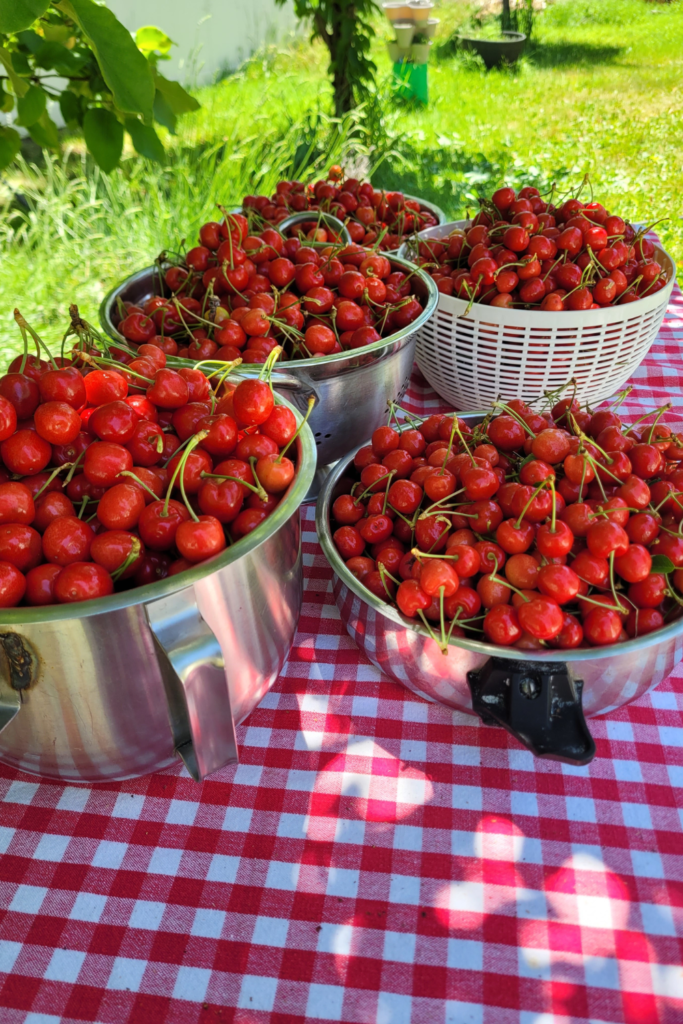
The moment you’ve been waiting for has finally arrived – it’s time to reap the rewards of your hard work in the backyard orchard! There’s nothing quite like biting into a juicy apple or peach that you’ve grown yourself. As someone who’s spent countless hours tending to my own fruit trees, I can tell you that harvesting is one of the most satisfying parts of the whole process. Let’s discuss the essentials of harvesting and enjoying your homegrown fruits.
Knowing When to Harvest
Timing is everything when it comes to harvesting fruit. Each type of fruit has its own indicators of ripeness, but here are some general tips:
- Apples and Pears: Gently lift and twist. If they come off easily, they’re ready.
- Stone Fruits (peaches, plums, apricots): Look for a slight give when gently squeezed and a rich color.
- Citrus Fruits: They don’t continue to ripen after picking, so wait until they’re fully colored and slightly soft.
Remember, not all fruits on a tree ripen at the same time. You might need to harvest over several days or even weeks. Trust your senses – sight, touch, and even smell can guide you to perfectly ripe fruit.
Proper Harvesting Techniques
Once you’ve determined your fruits are ready, it’s time to pick them. Here’s how to do it right:
- Use clean, sharp tools or your hands to avoid damaging the fruit or the tree.
- Gently twist and pull the fruit, or use pruning shears for stubborn stems.
- Handle fruits carefully to prevent bruising.
- Use a fruit-picking basket or bag to collect your harvest.
For those hard-to-reach fruits, a fruit picker tool can be a game-changer. It’s a long pole with a basket at the end that’s saved me from many precarious ladder or wobbly chair situations! (Yes, I have used chairs to pick my fruit trees!)
Storing and Preserving Your Harvest
After the excitement of harvesting, you’ll want to make sure your bounty doesn’t go to waste. Here are some storage and preservation methods:
- Short-Term Storage: Keep fruits like apples and pears in a cool, dark place or the refrigerator.
- Canning: Perfect for making jams, jellies, and preserves. It’s a great way to enjoy your fruits year-round.
- Freezing: Many fruits freeze well and can be used later in smoothies or baked goods.
- Drying: Try making your own dried fruit snacks – they’re delicious and nutritious.
One of my favorite ways to preserve the harvest is by canning. There’s something so satisfying about seeing rows of homemade jams lining the pantry shelves. Plus, they make wonderful gifts for friends and family!
Don’t forget to save some fruit for immediate enjoyment! Nothing beats eating a sun-warmed peach right off the tree or baking a fresh apple pie. Experiment with different recipes and find new ways to incorporate your homegrown fruits into your meals.
As you savor the fruits of your labor, take a moment to appreciate the journey from planting to harvest. Growing your own fruit is not just about the end product – it’s about connecting with nature, learning new skills, and enjoying the simple pleasures of life. So go ahead, take that first bite, and celebrate your success as a backyard orchardist!
Start Your Orchard with Confidence
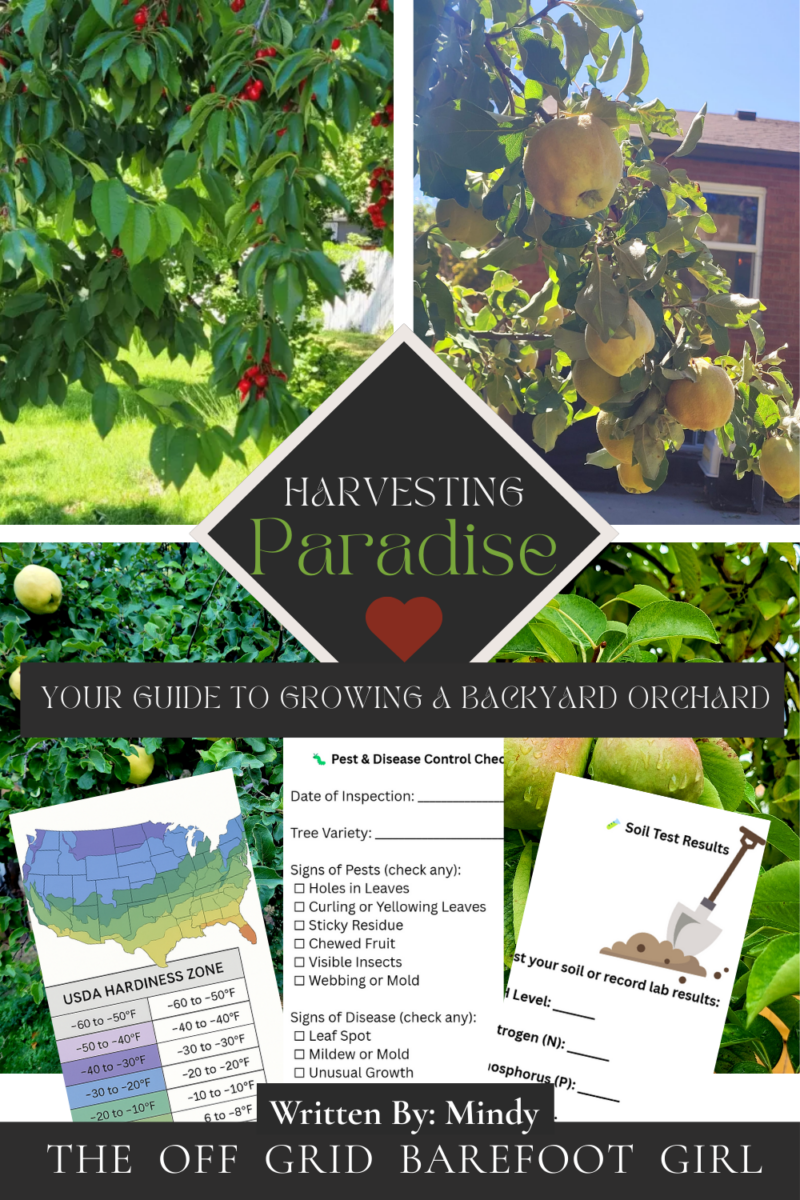
If you’re just beginning your orchard journey, Harvesting Paradise: Your Guide to Growing a Backyard Orchard is the perfect companion. I wrote this book to help everyday gardeners—just like you—plant and grow a thriving, low-maintenance orchard from scratch. Inside, you’ll find tips on selecting the right fruit trees, caring for them through the seasons, and building an abundant harvest that feeds your family for years to come. Plus, I have inserted my favorite recipes right from my own fruit trees! Let me help you turn your backyard into a fruitful paradise, one tree at a time.
Get your copy!
Harvesting Paradise: Your Guide to Growing a Backyard Orchard
Conclusion
Starting a backyard orchard may seem daunting at first, but with careful planning and dedication, it’s an achievable and rewarding endeavor. We’ve covered the essential steps, from planning and site preparation to planting, care, and harvesting. Remember, the key to success lies in choosing the right trees for your climate, preparing your soil properly, and providing consistent care throughout the seasons.
As you begin on this journey, don’t be afraid to start small and expand gradually. Even a couple of fruit trees can provide a bountiful harvest and bring joy to your homestead. Embrace the learning process and be patient – growing fruit trees is a long-term investment that pays off in delicious, homegrown produce and a deeper connection to nature.
So, roll up your sleeves, get your hands dirty, and start planning your backyard orchard today. Before you know it, you’ll be savoring the sweet fruits of your labor and sharing the abundance with friends and family. Happy planting, and may your orchard flourish!
Resources: Here are some helpful resources for further information.
- Comprehensive Guide on Grafting Fruit Trees – By Achillea Wildflower
- Planning a Backyard Orchard You Can Harvest Year-Round – By Food Gardening Network
- Backyard Orchard Culture, a New Approach to Growing – By Deep Green Permaculture
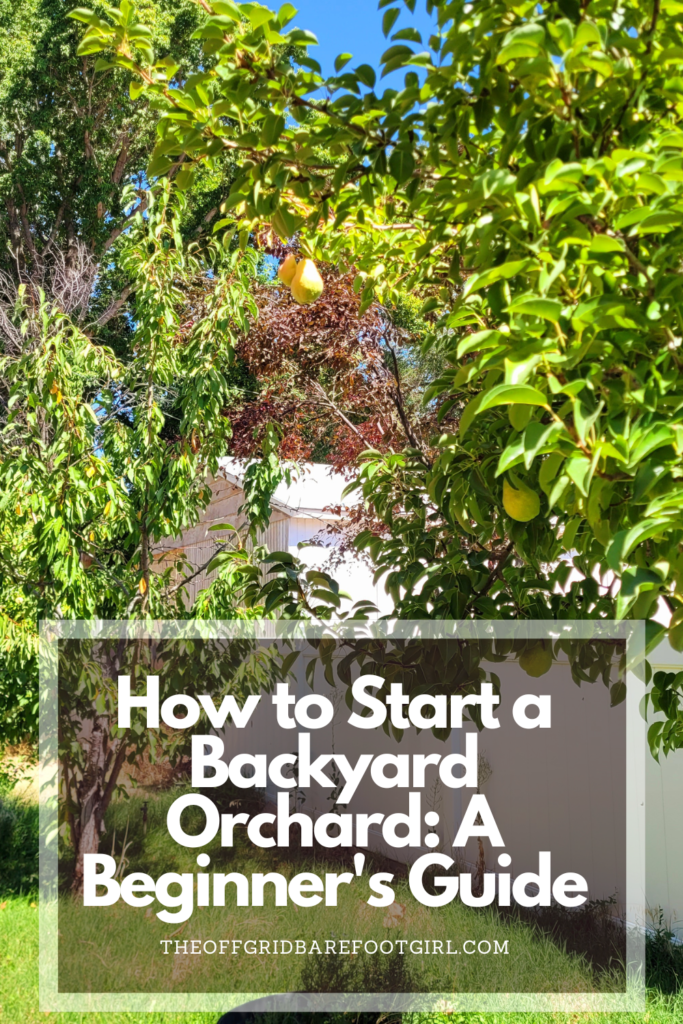
Frequently Asked Questions
1. What fruit trees are best for a backyard orchard?
Choose fruit trees that thrive in your local climate. Popular options include apple, pear, peach, and cherry trees.
2. How much space do I need for a backyard orchard?
The space required depends on the number and type of trees. Dwarf and semi-dwarf varieties are ideal for smaller spaces, needing about 8-15 feet between trees.
3. When is the best time to plant fruit trees?
The best time to plant is in early spring or late fall when the trees are dormant.
4. How do I care for my fruit trees?
Regular watering, pruning, and fertilizing are key to healthy fruit trees. Mulching around the base helps retain moisture and suppress weeds.
Summary
I hope I have inspired you to grow your own backyard orchard.
If you were encouraged by this post, I invite you to check out my FREE Printables Page for fun free printables, planners, and charts.
ENTER MY FREE Printables Page HERE
I invite you to check out some more of my posts!
All About Cherry Plum Trees: Ultimate Guide
How Persimmon Fruit Trees Can Change Your Life! Unbelievable!
How to Design Your Backyard Orchard for Maximum Yield
How to Grow a Sustainable Backyard Orchard
Surprising Benefits of Growing Garlic Around Your Fruit Trees
How to Can a Year’s Supply of Quince Jam
Pears: All About Pear Trees: Ultimate Guide
Cherries: All About Cherry Trees: Ultimate Guide
Quince: All About Quince Trees: Ultimate Guide
Apples: All About Apple Trees: Ultimate Guide
How to Grow a Productive Perennial Raspberry Patch
Why You Need to Start Micro-Orcharding in Your Backyard
How to Grow a Productive Perennial Strawberry Patch
Blessings,
The Off Grid Barefoot Girl

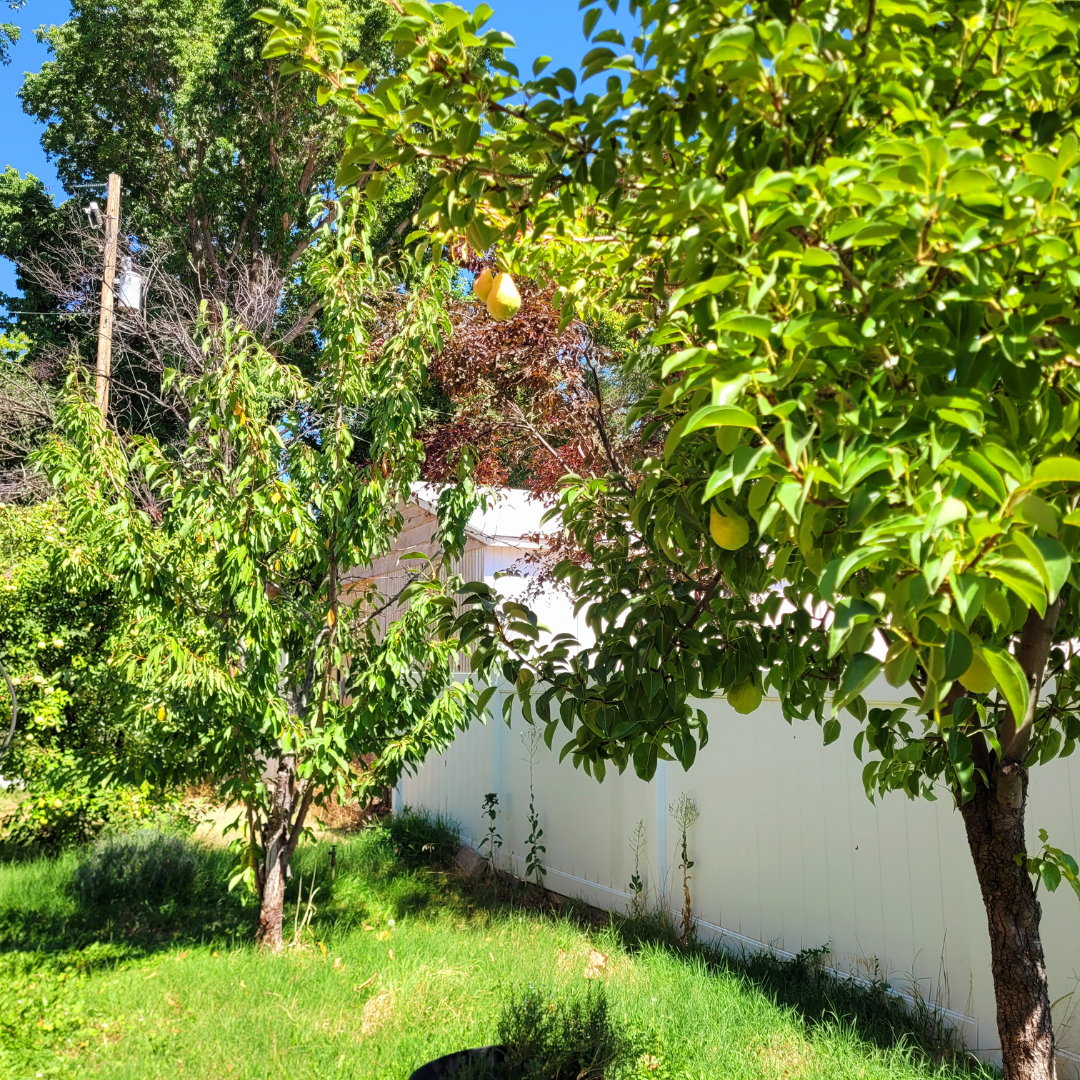



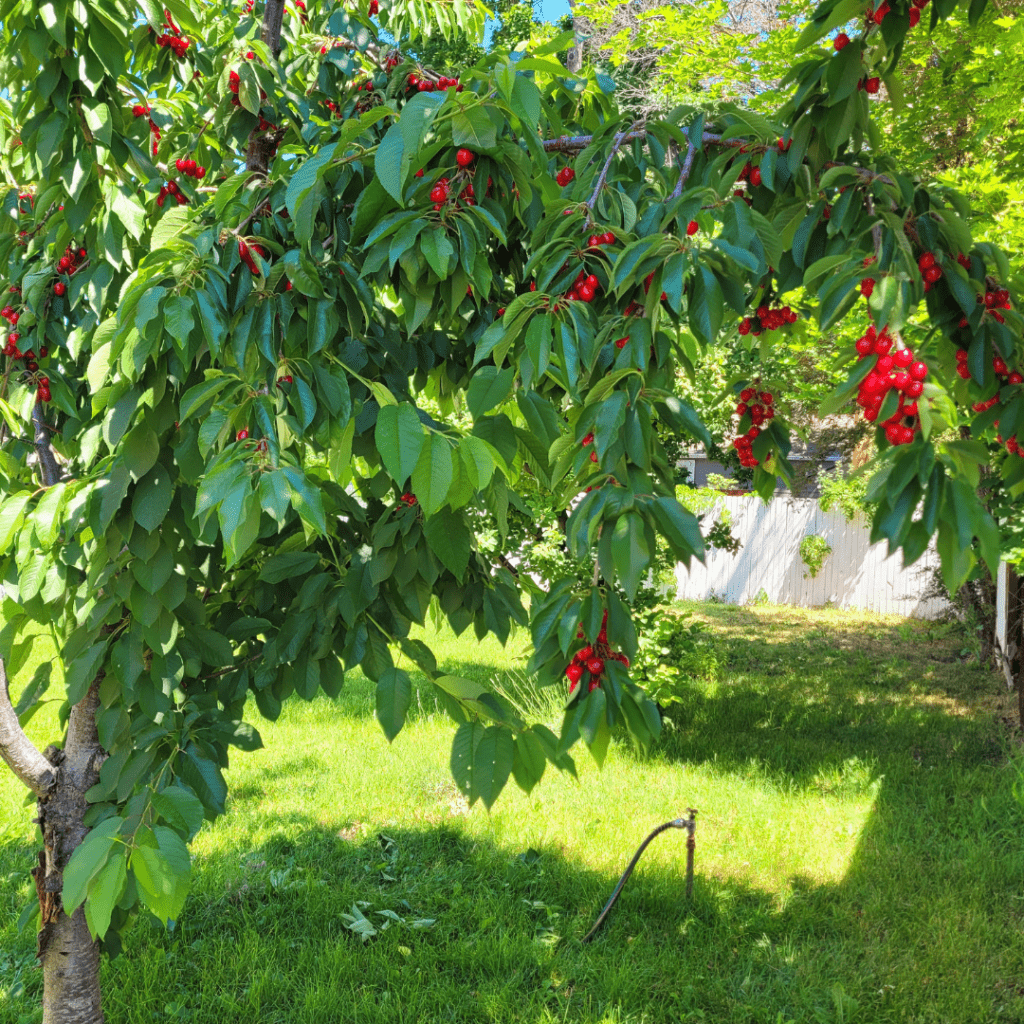
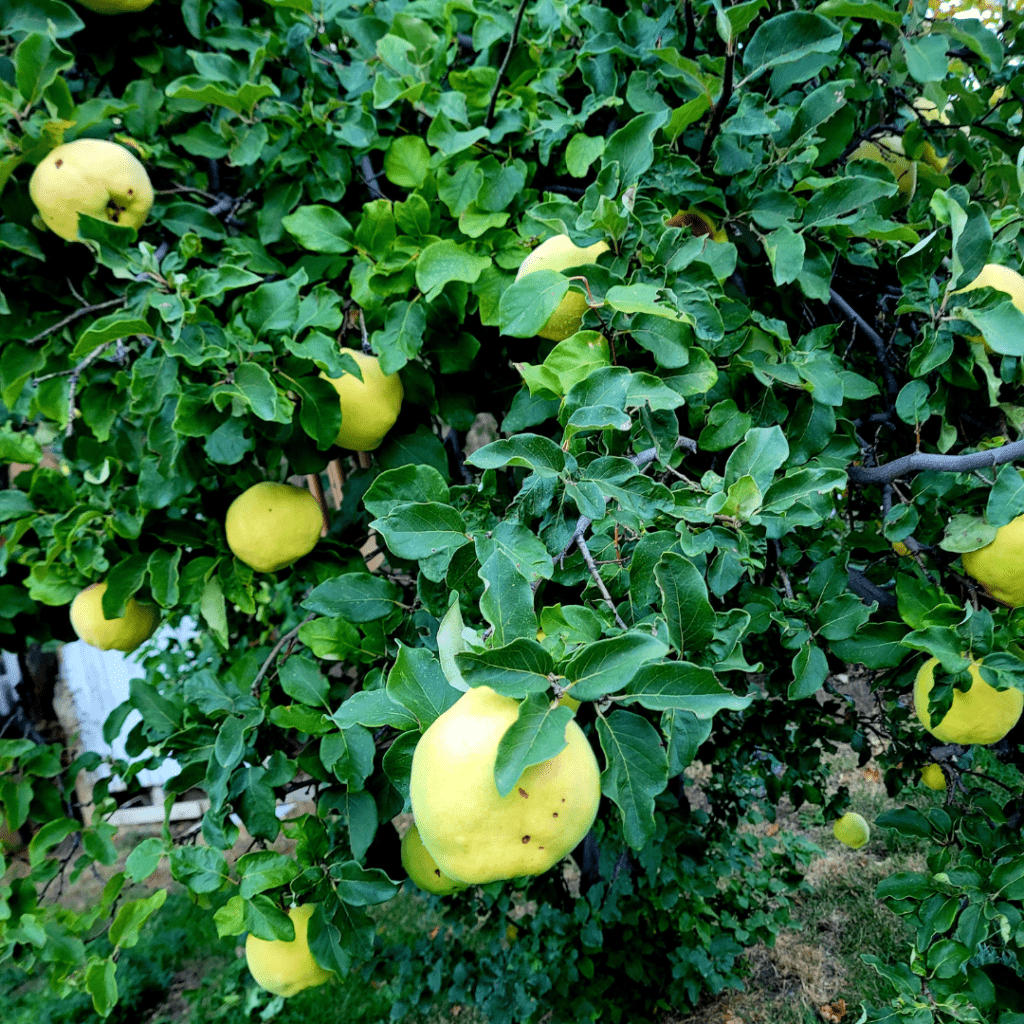
Love the article, sure do appreciate all the great information!
Thanks for the inspiration and for visiting!